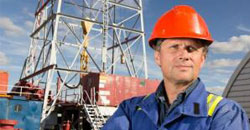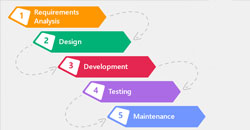Safety Diploma Courses
Committed to Safety Excellence
About Fire Safety Diploma Course
TWG International is the professional Fire and safety institutes in Hyderabad and provide guidance in getting Fire and safety course in Hyderabad. This course make a person competent by imparting knowledge and skills essential for job roles motioned below. All courses and certifications are recognized and accepted internationally.Who needs this qualification?
This qualification is aimed at people who want to build their career in occupational health and safety ,Fire Fighting / Fire safety this gives solid foundation in the field of Occupational Safety and health.Job Roles
Fire watchFire warden
Fire Marshall
Hole watch
Security & Safety supervisor
Security Supervisor
Fire Extinguishers Inspectors
Duration
240 1 Year/ 120 hours 6 months / 60 hours 3monthsAssessment
Descriptive / MCQTheory- 60%
Practical – 40%
Course Content
WHY SAFETY1.1 Introduction to “Safety”
1.2 Definitions of terms like Health .Safety ,Fire, IOSH, NEBOSH OSHA etc
1.3 Why businesses need Occupational Health and Safety
1.4 Reasons for implementing occupational Safety and health
1.5 Roles and responsibilities at various levels in managing safety
1.6 What Is Acident,Reasons to Prevent Accidents
1.7 How to Prevent Accident
1.8 The effects of Accidents on Victim, Supervisor ,company and country
OCCUPATIONAL HEALTH HAZARDS
2.1 Introduction to Occupational hazards
2.2 Definitions of terms like Hazard, Risk, Exposure
2.3 When does hazard pose a risk?
2.4 Risk Explained
2.4 Types of Hazards at the work Place
2.5 Physical hazards
2.6 CHEMICAL HAZARDS
2.7 BIOLOGICAL HAZARDS
2.8 Psychosocial hazards
2.9 Psychosocial hazards
2.9 MECHANICAL HAZARDS
2.10 Miscellaneous Hazards
PERSONAL PROTECTIVE EQUIPMENT (PPE)
3.1 Introduction to PPE
3.2 place of PPE in Hierarchy of risk controls
3.3 Purpose of PPE
3.4 Safe Usage of PPE
3.5 Employer and Employee Responsibilities
3.7 Training
3.6 Employee Responsibilities
3.6 Eye and Face Protection
3.7 Head Protection
3.8 Hand Protection
3.9 Foot Protection
3.10 Body Protection
3.11 Hearing Protection
MANUAL MATERIAL HANDLING
4.1 Introduction to manual handling
4.2 The Spinal Column and it’s Divisions
4.3 Manual Handling explained
4.4 Types of Injuries due to manual handling
4.5 Good Handling Technique for Lifting
4.6 Principles of Safe Handling
4.7 Safe Lifting Rules
4.8 Special Precautions
4.9 Team Lifting
ELECTRICAL SAFETY
5.1 Introduction to electricity and electrical safety
5.2 Definationof terms like voltage currnt earthing
5.3 Elctrical Hazards
5.4 Safe Work Practices
5.5 Working With Energized Parts
5.6 Portable Electric Tools safety
5.7 Personal Protective Equipment
5.8 Tools and Equipment
FIRE SAFETY TRAINING
6.1 what is fire? Fire Triangle and mechanics of fire
6.2 Introduction to fire safety
6.3 THE CLASSIFICATIONS OF FIRE
6.4 IDENTIFYING THE PROPER FIRE EXTINGUISHER
6.5 USING THE FIRE EXTINGUISHER
6.6 INSPECTING A FIRE EXTINGUISHER
6.7 Basic Fire Fighting; Extinguish Small Fires
6.8 Emergency Action Plan
6.9 TRAINING REQUIREMENTS PROGRAM IMPLEMENTATION
6.10 Employer and employee duties relating to fire safety
CRANE SAFETY TRAINING
7.1 Introduction to cranes, Types of cranes
7.2 Major Causes of Crane Accidents
7.3 How Do Accidents Occur?
7.4 Crane Hazards
7.5 Crane Safety
7.6 Planning Before Start-Up
7.7 Competent Person
7.8 crane Inspection
TRANSPORT SAFETY
8.1 Introduction
8.2 Transport accident causes
8.3 The Workplace (Health, Safety and Welfare) Regulations 1992
8.4 Road Transport HSE - HS(G)136
8.5 INTERNAL Traffic Control Plan (ITCP)?
8.6 Driver Training
8.7 Control measures in vehicle operations
8.8 Fork Lift Trucks
8.9 External Roads
8.10 Hazards in the Work Space
8.11 Preventive Measures
8.12 Safe Operation & Maintenance of Heavy Equipment and Trucks in Work Space
8.13 Safe Procedures for Night Work
ACCIDENT, INCIDENT INVESTIGATION & REPORTING
9.1 Introduction Accident, Incident Investigation & Reporting
9.2 DEFINITION OF ACCIDENT HAZARD, RISK,SAFETY AND SAFETY ENGINEERING
9.3 CAUSES OF ACCIDENTS
9.4 What is Near miss
9.5 What to be investigate?
9.6 Accident Causes
9.7 Accident Causation Model
9.8 1. Results of the Accident (Human & Economic Aspects)
9.9 Why Investigate ?
9.10 What, When & How to Investigate
9.11 The Investigator’s Qualifications
9.12 Reporting
9.13 Resources
About HSE Safety Diploma Course
TWG International is leaders in providing safety officer training. TWG the Best training institute for safety officer course & HSE officer course in Hyderabad. HSE Officer Course cover vast subject in the field of HSE & This course make a person competent by imparting knowledge and skills essential for job roles motioned below. All courses and certifications are recognized and accepted internationally.Who needs this qualification?
This qualification is aimed at people who want to build their career in Environmental management occupational health and safety , Fire safety. this gives solid foundation in the field of Occupational Safety and health.Job Roles
Environmental officerEnvironmental Specialist
HSE Officer
HSE supervisor
HSE Engineer
HSE Coordinator
HSE Advisor
HSE Specialist
HSE Site Manager
HSE Asst. Manager
HSE Manager
Duration
240 1 Year/ 120 hours 6 months / 60 hours 3monthsAssessment
Descriptive / MCQTheory- 60%
Practical – 40%
Course Content
BLOOD BORNE PATHOGEN1.1 Introduction to Bloodborne Pathogens
1.2 Common BB Pathogen Diseases
1.3 Human Immunodeficiency Virus (HIV)
1.4 Hepatitis B (HBV)
1.5 Hepatitis C (HCV)
1.6 Potentially Infectious Bodily Fluids
1.7 Means of Transmission
1.8 Exposure Potential
1.9 Universal Precautions
1.10 Personal Protective Equipment (PPE)
1.11 Decontamination
1.12 Regulated Medical Waste
1.13 Exposure Incident
1.14 Recordkeeping
ENVIRONMENTAL MANAGEMENT SYSTEM
2.1 Introduction
2.2 Environmental parameters
2.3 What is pollution
2.4 Managing the environment
OCCUPATIONAL HEALTH & SAFETY
3.1 Introduction
3.2 Safety and Health Program
3.3Management Commitment And Employee Involvement
3.4 Worksite Analysis
3.5 Hazard Prevention And Control
3.6Safety and Health Training
3.7 Program Evaluation
3.8 Accident Investigations
3.9 Ergonomics or Human Factors
3.10 OHSAS 18001 - Occupational Health And Safety Management System
3.11 PURPOSE OF MANAGEMENT SYSTEM
3.12 PDCA IN OH&S MANAGEMENT SYSTEM
3.13 Methodology For Hazard Identification and Risk Assessment
3.14 Accident, Incidents, Non-conformances & Corrective and Preventive Action
PERMIT TO WORK
4.1Introduction to Occupational hazards
4.2The Work Permit System The Work Permit System : When?
4.3The Work Permit System: Why?
4.4The Work Permit System: How?
4.5The Work Permit System : Requirements
4.6The Work Permit System : Development of work procedures
4.7The Work Permit System : Work Planning
4.8The Work Permit System : Work Execution
4.9Permit issuer’s responsibilities
4.10The Work Permit System : Permit acceptor’s responsibilities
LOCK OUT & TAGOUT LOTO
5.1 Lock Out & Tagout
5.2 Why use LOTO?
5.3 Source of hazardous energy
5.4 Equipment used in Lock Out Tag Out
5.5 Types of Lock Out Devices
5.6 Responsibilities of Designated Person
5.7 Responsibilities of Authorized Person
5.8 LOTO Process
5.9 The “Fatal Five” Main Causes of Lockout/Tagout Injuries
5.10 HOW MOST INJURIES OCCUR
5.11 CAUSES OF INJURY
5.12 REASONS FOR EQUIPMENT NOT BEING TURNED OFF
5.13 RELEASE FROM LOCKOUT/TAGOUT
5.14 KEY ELEMENTS TO AN EFFECTIVE PROGRAM
CONFINED SPACE SAFETY
6.1 Intorduction
6.2 Definition of confined space and examples of c s
6.3 Permit required, non permit required, confined space
6.4 Hazards of confined space
6.5 Hazards control
6.6 Confined space entry permit
6.7 Basic entry requirements
6.8 Permit issue and cancellation
6.9 Duties of entry supervisor
6.10 Duties of entrants
6.11 Stand-by man
6.12 Safe working guidelines
About Construction Safety Diploma Course
TWG International is leaders in providing Construction site safety officer training. TWG the Best training institute for safety officer course & HSE officer course in Hyderabad. HSE Officer Course cover vast subject in the field of HSE & This course make a person competent by imparting knowledge and skills essential for job roles motioned below in the field of construction .All courses and certifications are recognized and accepted internationally.Who needs this qualification?
This qualification is aimed at people who want to build their career in occupational health and safety ,in construction this gives solid foundation in the field of Construction Safety and health.Job Roles
Construction Site Safety officerJr. Safety officer
Site safety officer
Officer - Safety
Site Safety Assistance
Safety Assistance
Safety Inspector
Permit Coordinator
PTW Coordinator
Permit to work System Auditor
PTW System Auditor
Permit Controller
Construction Site Safety Manager
Manager – Safety Construction Site
Duration
240 1 Year/ 120 hours 6 months / 60 hours 3monthsAssessment
Descriptive / MCQTheory- 60%
Practical – 40%
Course Content
PERMIT TO WORK1.1 Introduction to Occupational hazards
1.2 The Work Permit System The Work Permit System : When?
1.3 The Work Permit System: Why?
1.4 The Work Permit System: How?
1.5 The Work Permit System : Requirements
1.6 The Work Permit System : Development of work procedures
1.7 The Work Permit System : Work Planning
1.8 The Work Permit System : Work Execution
1.9 Permit issuer’s responsibilities
1.10 The Work Permit System : Permit acceptor’s responsibilities
WORK AT HEIGHT & LADDER SAFETY
2.1 work at height & ladder
2.2 types of portable ladders
2.3 main causes
2.4 injury prevention basics
2.5 training
2.6 The duty of the employer
2.7 The duty of the employee
2.8 don’ts on ladder
2.9ladder safety – accident prevention
2.10 maintenance and storage
SCAFFOLDING SAFETY
3.1 Introduction to Scaffolding
3.2 Types of Scaffold
3.3 The five most serious scaffold (primary) hazards
3.4 Full Body Harness - Fall Arrest System
3.5 Fall Hazards
3.6 Scaffold Platform Construction
3.7 Access
3.8 Scaffold Erection
3.9 Scaffold Inspection
3.10 Training workers
3.11 Scaffold tag
3.12 Scaffold use
3.13 Dismantling
3.14 The most frequently cited OSHA scaffolding violations include
EXCAVATIONS SAFETY
4.1 introduction to evacuations
4.2 Excavation Hazards
4.3 Requirements and Requirements of Protective Systems
4.4 Materials and Equipment
4.5 Shoring Trench Shield
4.6 Protection from Vehicles
4.7 Hazardous Atmosphere
4.8 Means of Access and Egress
4.9 Protection from Falls, Falling Loads, and Mobile Equipment
4.10 Inspections of Excavations
4.11 Site Evaluation Planning
LOCK OUT & TAGOUT LOTO
5.1 LOCK OUT & TAGOUT
5.2 Why use LOTO?
5.3 Source of hazardous energy
5.4 Equipment used in Lock Out Tag Out
5.5 Types of Lock Out Devices
5.6 Responsibilities of Designated Person
5.7 Responsibilities of Authorized Person
5.8 LOTO Process
5.9 The “Fatal Five” Main Causes of Lockout/Tagout Injuries
5.10 HOW MOST INJURIES OCCUR
5.11 CAUSES OF INJURY
5.12 REASONS FOR EQUIPMENT NOT BEING TURNED OFF
5.13 RELEASE FROM LOCKOUT/TAGOUT
5.14 KEY ELEMENTS TO AN EFFECTIVE PROGRAM
CONFINED SPACE SAFETY
6.1 Intorduction
6.2 Definition of confined space and examples of c s
6.3 Permit required, non permit required, confined space
6.4 Hazards of confined space
6.5 Hazards control
6.6 Confined space entry permit
6.7 Basic entry requirements
6.8 Permit issue and cancellation
6.9 Duties of entry supervisor
6.10 Duties of entrants
6.11 Stand-by man
6.12 Safe working guidelines
About Course
This course make a person competent by imparting knowledge and skills essential for job roles motioned below .All courses and certifications are recognized and accepted internationally.Who needs this qualification?
This qualification is aimed at people who want to build their career in Industrial health and safety ,Fire Fighting / Fire safety this gives solid foundation in the field of industrial l Safety and health.Job Roles
Fire watchFire warden
Fire Marshall
Hole watch
Safety Watch
Safety Inspector
Safety Engineer
Safety Coordinator
Safety Manager
Etc
Duration
240 1 Year/ 120 hours 6 months / 60 hours 3monthsAssessment
Descriptive / MCQTheory- 60%
Practical – 40%
Course Content
HAND & POWER TOOLS SAFETY1.1 Hand and Power Tools Safety
1.2 Hazards
1.3 Basic Tool Safety Rules
1.4 Hand Tool Hazards
1.5 Hand Tools – Protection
1.6 Power Tools
1.7 Power Tools – Precautions
LOCK OUT & TAGOUT LOTO
2.1 LOCK OUT & TAGOUT
2.2 Why use LOTO?
2.3 Source of hazardous energy
2.4 Equipment used in Lock Out Tag Out
2.5 Types of Lock Out Devices
2.6 Responsibilities of Designated Person
2.7 Responsibilities of Authorized Person
2.8 LOTO Process
2.9 The “Fatal Five” Main Causes of Lockout/Tagout Injuries
2.10 HOW MOST INJURIES OCCUR
2.11 CAUSES OF INJURY
2.12 REASONS FOR EQUIPMENT NOT BEING TURNED OFF
2.13 RELEASE FROM LOCKOUT/TAGOUT
2.14 KEY ELEMENTS TO AN EFFECTIVE PROGRAM
WELDING & CUTTING
3.1 WELDING & CUTTING
3.2 POTENTIAL HAZARDS
3.3 Welding
3.4 Safe Operation Procedure for Cutting Operations
3.5 P P E
3.6 Cutting
3.7 Safe Operation Procedure for Cutting Operations
3.8 General Safety rules
THE CONTROL OF SUBSTANCES HAZAROUS TO HEALTH
4.1 The Control of Substances Hazardous to Health COSHH
4.2 What you need to do
4.3 COSHH assessment: Identifying hazard and assessing risk
4.4 Chemical safety data sheets
4.5 Workplace exposure limits
4.6 Control measures to prevent or limit exposure to hazardous substances
4.7 Permits to work
4.8 Monitoring the control of exposure to hazardous substances
4.9 Health surveillance
4.10 Emergency Preapredness
PERMIT TO WORK
5.1Introduction to Occupational hazards
5.2The Work Permit System The Work Permit System : When?
5.3The Work Permit System: Why?
5.4The Work Permit System: How?
5.5The Work Permit System : Requirements
5.6The Work Permit System : Development of work procedures
5.7The Work Permit System : Work Planning
5.8The Work Permit System : Work Execution
5.9Permit issuer’s responsibilities
5.10The Work Permit System : Permit acceptor’s responsibilities
CONFINED SPACE SAFETY
6.1 Intorduction to confined space
6.2 Fefinition of confined space and examples of c s
6.3 Permit required, non permit required, confined space
6.4 Hazards of confined space
6.5 Hazards control
6.6 Confined space entry permit
6.7 Basic entry requirements
6.8 Permit issue and cancellation
6.9 Duties of entry supervisor
6.10 Duties of entrants
6.11 Stand-by man
6.12 Safe working guidelines
About Course
This course make a person competent by imparting knowledge and skills essential for job roles motioned below .All courses and certifications are recognized and accepted internationally.Who needs this qualification?
This qualification is aimed at people who want to build their career in Oil and gas health and safety , Fire safety. this gives solid foundation in the field of Oil and Gas Safety and health.Job Roles
Environmental officerFire watch
Fire warden
Fire Marshall
Hole watch
Safety Watch
Safety Inspector
Safety Engineer
Safety Coordinator
Safety Manager
Etc
Duration
240 1 Year/ 120 hours 6 months / 60 hours 3monthsAssessment
Descriptive / MCQTheory- 60%
Practical – 40%
Course Content
COMPRESSED GAS CYLINDER SAFETY AND SAFE HANDLING OF GAS CYLINDERS1.1INTRODUCTION
1.2 l Properties of Gases
1.3 HANDLING OF Transport and Storage COMPRESSED GAS CYLINDERS
1.4 IDENTIFICATION AND LABELING
1.5 Cylinder connections
1.6 Storage COMPRESSED GAS CYLINDERS
LOCK OUT & TAGOUT LOTO
2.1 LOCK OUT & TAGOUT
2.2 Why use LOTO?
2.3 Source of hazardous energy
2.4 Equipment used in Lock Out Tag Out
2.5 Types of Lock Out Devices
2.6 Responsibilities of Designated Person
2.7 Responsibilities of Authorized Person
2.8 LOTO Process
2.9 The “Fatal Five” Main Causes of Lockout/Tagout Injuries
2.10 HOW MOST INJURIES OCCUR
2.11 CAUSES OF INJURY
2.12 REASONS FOR EQUIPMENT NOT BEING TURNED OFF
2.13 RELEASE FROM LOCKOUT/TAGOUT
2.14 KEY ELEMENTS TO AN EFFECTIVE PROGRAM
WELDING & CUTTING
3.1 WELDING & CUTTING
3.2 POTENTIAL HAZARDS
3.3 Welding
3.4 Safe Operation Procedure for Cutting Operations
3.5 P P E
3.6 Cutting
3.7 Safe Operation Procedure for Cutting Operations
3.8 General Safety rules
PERMIT TO WORK
4.1Introduction to Occupational hazards
4.2The Work Permit System The Work Permit System : When?
4.3The Work Permit System: Why?
4.4The Work Permit System: How?
4.5The Work Permit System : Requirements
4.6The Work Permit System : Development of work procedures
4.7The Work Permit System : Work Planning
4.8The Work Permit System : Work Execution
4.9Permit issuer’s responsibilities
4.10The Work Permit System : Permit acceptor’s responsibilities
CONFINED SPACE SAFETY
5.1 Intorduction
5.2 Definition of confined space and examples of c s
5.3 Permit required, non permit required, confined space
5.4 Hazards of confined space
5.5 Hazards control
5.6 Confined space entry permit
5.7 Basic entry requirements
5.8 Permit issue and cancellation
5.9 Duties of entry supervisor
5.10 Duties of entrants
5.11 Stand-by man
5.12 Safe working guidelines
Copyright © 2025 TWG International. All rights reserved.
Terms of Use | Privacy Policy | Cancellation & Refund
Terms of Use | Privacy Policy | Cancellation & Refund
 Scroll
Scroll


























